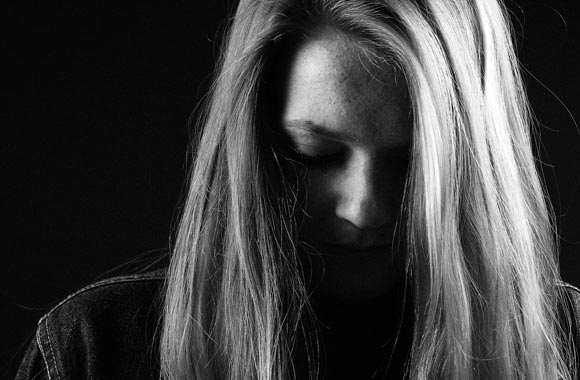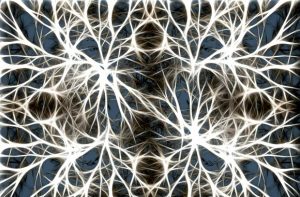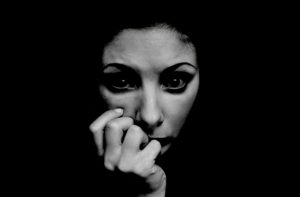Mood Disorders
Mood disorders as the name applies are disorders in the person’s moods and are also called affective disorders.
Causes
Although the exact cause leading to this problem is yet not unknown they are believed to be caused by the low levels of neurotransmitters such as dopamine, norepinephrine, and serotonin in the brain. The disruption of areas of the brain controlling the moods of a person is also believed to be one of the causes of this disorder.
So there is no particular cause linked with any of the disorders but the decreases in the levels of neurotransmitters are seen in different regions of the brain. Certain medication use can also lead to this mood-swinging disorder.
Forms
There are various forms of these disorders. These areas follow:
Personality Disorders: This is the form of mood disorder in which a person becomes backward in a variety of important skills such as he shows antisocial behavior, becoming paranoid, strictly following rules, limited his area of interest to certain things. He may show a completely dependent personality or an aggressive personality. He mostly feels shy at one time and remains confident. Some of the people in this disorder do strange things to attract other people toward him. So personality disorder is the umbrella under which lots of disorders come and affect the human personality.
Bipolar Disorder: This is a disorder that is characterized by two things in the lifetime of the patient, one is depression and the other is mania. Depression occurs more than mania. At one time they feel extra happiness and euphoria and the other time they become so much pessimistic and hopeless and remain sad. So this disease alternates between two mood extremities.
Major Depression: This is the most common form of mood disorder which affects millions of people every year. It is characterized by sadness, apprehension, lack of sleep, and appetite. People remain poor in concentrating on anything. They socially withdraw themselves. This depression has further many types. These include
Atypical Depression: Here paradoxical anhedonia, increase sleep and increase appetite is seen in a person suffering from this disorder.
Psychotic major depression: Here person experiences delusion, delirium, and hallucinations.
Postpartum Depression: This type of disorder occurs in women after childbirth. She becomes depressed and remains sad and hopeless.
Melancholic Depression: This is characterized by anhedonia, sleep problems, and grief all the time.
Catatonic Depression: This catatonic depression is the severe form of this depression and here person becomes mute and socially withdraws himself. The symptoms of this disorder are also seen and associated with schizophrenia.
Dysthymia Depression: This is a depression similar to major depression but it is a prolonged type of depression and has less severe as compared to major depression.
Seasonal Affective Disorder: As the name indicates this is a type of depression occurring during a particular season per year in some people. The season may either be winter or it may be summer.
Treatment*
The treatment is done through the use of antidepressants as well as by psychological therapy in certain forms of this disorder.

Depression
Major depression in modern society is one of the most common psychiatric disorders of nature. Not only that depression has devastating effects on the individual but affective disorder, itself is a major challenge for a public health system. Therefore, there were developed a variety of studies to identify risk factors for major depression. These studies have highlighted the strong contribution of the constitutive factors in the development of major depression, including genetic, gender, and personality traits.
The idea of genetic determination of depression is strongly supported by the findings of the twins and adoptions made from observations on individuals and family history of depression, which would lead to the development of depression. It was also shown that women are two times more likely than men to develop symptoms of depression and personality traits of neurotic prone to depression.
Besides the evidence on constitutional predisposition in the development of major depression, has been issued also the predominant role of environmental factors regarding the feeling depressed pathogenesis.
Numerous studies have investigated the relationship between psychosocial stress and the development of major depression. Many of these were conceptualized in terms of psychosocial stress, and major life events in a given time frame. Major life events can be defined as “watershed moment” that induces changes in life and involve individual adaptation. Thus, major life events are daily facts, symptoms of depression, and chronic forms of psychosocial stress. Using scales for assessing major life events, numerous studies have shown an association between exposure to life events, stress, and the coming episodes of major depression. Apart from the research findings that highlighted the events of life, some studies have recorded associations between chronic stress and organizational stress such as marital difficulties, and the establishment of depression.
Besides the potential effects of stress and feeling depressed on health, and the mood of individuals, stress manifests social and economic impact. Stress can reduce performance and productivity at work, thus affecting the evolution of business and ultimately the economy as a whole. It may also help sustain the company stresses that kill the frustration expressed by leaders and other authorities, as well as the impatience and intolerance directed towards other partners.
Referring to the developed countries (the U.S.) any day of work register 1 million workers who are absent from work due to stress-related symptoms of depression, namely headaches, back pain, ulcers, insomnia, anxiety, problems heart, hypertension, and gastrointestinal problems.
A study found says: “… It is worrying to see that 26% of the active population who registered injuries, feelings of malaise, illness, suffered from depression in the last 12 months and that this percentage is significantly worse in some sectors “
Feeling depressed? If you suffer from this kind of disorder, all you have to do is arm yourself with a lot of will and try to do exactly the opposite of what you do now. For example, if you feel like staying in the house because you are depressed, go out to the park and have some fresh air. Also, you have to go to a doctor and tell him about your problem, there are some centers for this kind of problem.
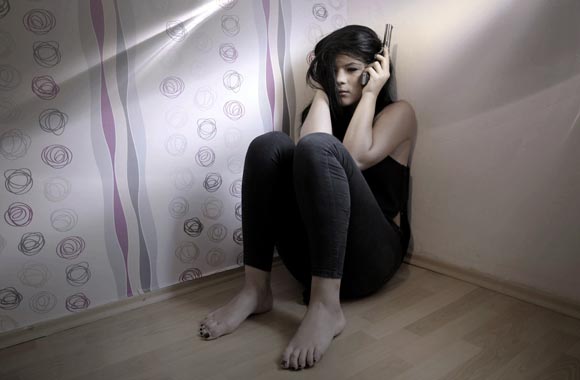
Major Depression
Major Depression is a serious disorder that afflicts the human psyche in such a way that the afflicted tend to act and react abnormally toward others and themselves. It has approximately affected billions of people in the world each year. Depression is strongly linked to suicide. Such a suicide rate is now responsible for more deaths than cardiovascular diseases or cancer. Depression is often described as an exaggeration of the duration and intensity of normal mood changes.
Depression is not only common in adults; it is also seen in teenagers as well. In them, it is due to low self-esteem stemming from increased emphasis on peer popularity. It may also arise due to poor family relations.
Etiology
Depression is thought to be caused by a disruption in the normal levels of certain important neurotransmitters. It is said that normal levels of norepinephrine, dopamine, and serotonin are important for our mood control and changes. They maintain our mood as being normal and happy. Depression is due to a deficiency of these monoamines, norepinephrine, serotonin, and dopamine at certain key sites in the brain. Some other causes include any lesion in the hippocampus area which is an important area for mood and memory, overactivity of the hypothalamus-pituitary-adrenal axis, excess secretion of various hormones like cortisol, estrogens, etc
The decrease in the level of these important monoamines occurs due to a variety of reasons such as alcohol and drug abuse, stressful life, events and continuous tensions, poverty, emotional and sexual abuse, due to some diseases like thyroid diseases, neoplasia, or due to chronic diseases. The number of hypnotics drugs usage for a prolonged period of time leads to depression
Signs and Symptoms
The important symptoms of major depression are intense feelings of sadness, gloomy thoughts hopelessness, and despair as well as the inability to experience pleasure in unusual activities, changes in sleep patterns, appetite loss, suicidal thoughts, constant boredom, peer problems, increase aggression, and loss of energy.
Diagnosis
The best way to diagnose is to screen out the vulnerable group of people for the risk of suicide and then refer them for treatment. Some of the risk factors on the basis of diagnosis of depression are made including verbal signs of suicide within the last three months, prior attempts at suicide, an indication of severe mood problems, or excessive alcohol and substance use.
Treatment*
The treatment is based on two main avenues; psychotherapy and medication.
The mild cases can be easily treated with the help of psychotherapy sessions which are via intense listening, advice, and encouragement.
For the more severe cases of depression, especially those having constant depressive symptoms, medication may be necessary as, without pharmaceutical treatment, this condition can further aggravate, escalate and become fatal. The medicines used for treating this disease are:
- Selective serotonin reuptake inhibitors: In this group important and good drugs are fluoxetine, citalopram, and fluvoxamine.
- Serotonin/norepinephrine reuptake inhibitors
- Atypical antidepressants such as bupropion and mirtazapine.
- Tricyclic antidepressants such as amitriptyline, and imipramine.
- Monoamine oxidase inhibitors
These all drugs result in increasing levels of norepinephrine and serotonin in the brain which then provide relief from depression. With the help of family, counselors, and mental health professionals, a person can get rid of the depressive symptoms and can be able to fully enjoy his life.

Atypical Depression
Atypical Depression is one of the forms of mood disorder and the type of major depression is characterized by strange mood behavior. But one of its good findings is that such persons having this disorder do feel good if there is something positive in their life. But they can feel bad too when they are been criticized. In this disorder, mood reactivity occurs. In major depression, the most commonly manifested type of major depression is this atypical depression. It affects a large number of people in the world.
This disorder is also seemed to be run in families affecting different people of the same family. People with this atypical depression feel too tired or paralyzed to get out of bed. This type of depression is usually seen in people when they experienced an interpersonal rejection by a close friend especially a lover or a boss. With the help of proper treatment, most people with this depression get improved, usually within weeks, and can also return to their normal daily life activities.
Causes
The exact cause is not known but atypical depression arises due to an imbalance of hormonal levels as well as in the neurotransmitters especially the feel-good neurotransmitters which are very important in controlling our moods and emotions. Genetics, as well as environmental factors, are also thought to cause this disorder. Others include prolonged use of various drugs including benzodiazepines, drugs for controlling high BP, and other such drugs. It may be due to strong and positive family history, any stressful life event, or it may be due to chronic diseases such as Alzheimer’s disease, heart disease, cancer, or diabetes.
Clinical Features
The symptoms of this disorder are characterized by:
- Increase sleep
- Increase in weight due to overeating
- Generalized body pain and aches
- Feelings of heaviness all the time especially in the upper and the lower limbs
- These people also shoe increase sensitivity in case of rejection
- Sadness
- Anxiety
- Less libido
- The feeling of fatigue and sluggishness
But these people do feel happiness and express it, unlike other depressive disorders.
Diagnosis
It is only made on the basis of symptoms of the disorder as well as any such sad event that has led to this disorder. No such accurate criterion other than this is utilized herein in making a diagnosis. Certain baseline tests are done for excluding differential diagnoses such as thyroid abnormalities or other brain diseases.
Treatment*
Treatment is usually done by using certain antidepressants. There are available in many different groups. Like atypical, typical antidepressants, monoamine oxidase inhibitors, etc but the best ones are selective serotonin reuptake inhibitors such as escitalopram, citalopram, fluoxetine, etc. They should be used for a certain time period only. Mood stimulants can also be beneficial. Behavioral therapy, if done, is also better for that patient with this disorder. Indeed it is more helpful than medication. Ask the patient to do exercises regularly. These days new treatment with electroconvulsive therapy is also seemed to be effective in depressive patients.
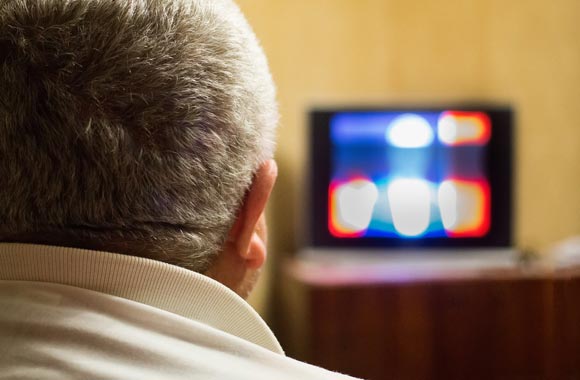
Dysthymia
Dysthymia is one of the mood disorders characterized by depression which is of old duration but less severe in intensity than major depression. It is also considered a mild type of depression. In this disorder, people remain undiagnosed and continually suffer from these depressive symptoms. This is also seen to run in the families. These people feel that they are under some degree of continuous stress.
This chronic disorder is usually characterized by the early and gradual onset in children or adults. In the case of adults, around 75% of the people with this disorder may culminate into Major Depressive Disorder within the period of 5 years. The spontaneous recovery ratio for dysthymia is approximately 10% per annual. This recovery rate can be significantly improved with active treatment.
Signs and Symptoms
In these patients, similar symptoms like that of a major type of depression are seen. These include anxiety, no hope, sadness, despair, appetite loss, frustration, abrupt bursting into anger, poor sleep, or there may be excess sleep, irritation, and aggressiveness, lack of concentration in anything, loss of libido, and patient becoming somewhat dull and lethargic.
Causes
The exact cause of this disease is not known. It is found in people of the same families so first degrees relatives are more prone to develop dysthymia. It can be due to some medical reasons or the chronic use of drug abuse, alcohol, smoking, etc. In elders due to some mental dysfunction or any mental illness along with isolation, problems lead to this type of depression. It is seen that this type of depression is not caused by the use of any medically approved drug.
Diagnosis
There is no perfect criterion for detecting it. It is diagnosed on the basis of its symptoms of chronic nature. Depression for more than two years or frequent episodes of these depressive symptoms is diagnosed as dysthymia. There is also one criterion about this disease’s diagnosis depressive symptoms of lethargy, sadness, and anxiety remain for two months consecutively for at least a year or two.
Treatment*
This is done through the use of a certain antidepressant. Nowadays the best medicines considered for this depression or for other depressions are selective serotonin uptake inhibitors and this group of important drugs as fluoxetine, sertraline, citalopram, and paroxetine. These drugs act to enhance the monoamine neurotransmitters, norepinephrine, and serotonin which are important for different ranges of good moods. Combinations of other drugs such as anti-anxiety and mood stabilizers are also helpful in treating this disorder.
Complication
If this disorder is not treated on time it will lead to clinically significant distress as well as impairment in the social life of a person, his occupational life can also get disturbed, and his other important functioning as a result of wide ranges of mood disturbances. In children, this disorder is often associated with poor school performance and lack of social interaction.
Children and adults with this disorder are usually cranky and depressed all the time. They become more pessimistic about the passage of time. In adult people, this disorder is associated with an increased risk of suffering from major depression and substance-related disorders. In children, this disorder can lead to an increased risk of suffering from attention deficit or hyperactivity disorder, anxiety disorders, conduct disorder learning disorders as well as mental retardation.

Seasonal Affective Disorder
Seasonal affective disorder is the type of mood disorder occurring in certain seasons only. A person may feel symptoms of depression either in the winter or in the summer, they can also be in the spring or in the autumn. This disorder is also called the course specifier. But the incidence of this type of depression is more in the winter, therefore, this disorder has been given many names as well such as hibernation reactions and winter blues, etc.
Causes
It seems that this type of disorder begins usually in the twenties or in adolescence age but any age group can be suffered from this disorder and the average age is found to be of 23 years. As it is known these occur in the winter or autumn seasons, which are named for sad seasons as well, so low light, low temperature, certain changes in hormonal levels as well as the decrease in brain neurotransmitter levels, all lead to this seasonal affective disorder. It is also thought that due to the failure of people to cope with the extremes of seasons, this type of depression arises in them. Another thought for this disorder’s cause is the mutation in the gene which expresses melanopsin so it is also a risk factor.
Signs and Symptoms
Seasonal Affective Disorder shows similar signs and symptoms as depression. These include:
Symptoms in the Winter
- lethargy,
- fatigues,
- sadness,
- irritability,
- alternated metabolism, as well as overeating, especially sweat foods leading to weight gain,
- level of activity is decreased,
- generalized body aches,
- crying spells,
- apprehension,
- suicidal thoughts,
- sleep disturbance,
- poor concentration,
- Less sex drive.
These are arisen or begin to arise during the fall of every year and remain there till the spring season arises. These symptoms are increased in intensity during the darkest months of the year.
Symptoms in the summer
- Insomnia
- Weight loss
- Decrease appetite
- Less libido
- Aggression
Diagnosis
The symptoms of depression appearing in particular months lead to the diagnosis of this disorder. It is said that episodes of mania, depression, anxiety, and other such symptoms and complaints should be there in two consecutive years in particular to diagnose this disorder.
Treatment*
Here along with medication, light therapy, ionized air administration therapy, as well as cognitive behavioral therapy, are done. A person is asked to walk in the daytime and exercise along with these therapies.
Medicines used here: These include antidepressants such as fluoxetine, paroxetine, and citalopram which are seemed very helpful. Use them for a period of less than a few months so that their side effects will not be encountered much. Other drugs such as stimulant modafinil are also found helpful.
Light therapy: As it is said that due to melatonin secretion disturbance this disorder arises, the use of light especially bright light will be helpful here, especially in the winter season.
Ionized air administration or negative air ionization is also an effective treatment. But usually, medication and light therapy are used in treating this disorder.
Cognitive Behavioral Therapy: It provides betterment in a person’s moods, thoughts, and behavior.
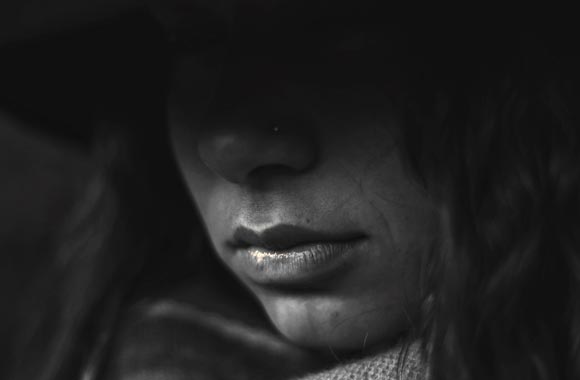
Postpartum Depression
Postpartum depression is the type of depression that is seen in women after the delivery of the baby. It may last from some days to even a few weeks or may continue up to a year even. This depression is also seen in new fathers as well but the ratio of this type of depression is low in males.
Causes
The exact cause of this disease is not known. Due to hormonal changes throughout the body; some women feel mood swings during their pregnancy. This may increase after the delivery. So hormonal imbalances are seemed to play a major role in causing this disease. There are seen to be involved many factors other than hormonal such as lack of vitamins. It may also be thought that changes in the lifestyle because of the newborn which causes massive changes in a woman’s life, may culminate in postpartum depression. Any stress full event may also precipitate this depression. Lack of sleep, tiredness, housework stress, and certain doubts about being a good mother, are also leading causes.
Risk Factors
Mother chronically using alcohol or any drug of abuse or smoking, age less than 20 years, unplanned pregnancy, some mood disorders already, not good relationship with the partner and his lack of support along with family, and financial problems. This depression is also seen if the mother is single or has to stressful full life, has had a miscarriage before, is not happy with the marriage, and any illness of the brain may lead to this postpartum depression.
Signs and Symptoms
Mother is found to be sad and upset all the time, lose her appetite, gloomy thoughts are present all the time in her mind, remains fatigued, and shows anxiety, sleep disorders, restlessness, irritation, and lack of interest in everything, she does not feel pleasure, shows poor energy and concentration and suicidal thoughts. She becomes frustrated easily, abruptly bursts into anger, and there is decreased sex wish and drive as well. She is not found to care for herself properly as well as her baby, she shows no interest in her baby, she may not like her baby, and she can even lead to infanticide-like crime.
Diagnosis
There are not so many accurate tests for diagnosing this disease. Depression is diagnosed on the basis of symptoms of this postpartum depression. Blood tests should be done to check hormonal levels.
Treatment*
This baby blues depression is usually finished itself and passed off within some days. In case it remains, treatment should be done.
The use of medications such as antidepressants is helpful in this depression treatment and the drugs that can be used during this period are sertraline, fluoxetine, nortriptyline, etc. If the mother is lactating, use those drugs which cannot be passed via breast milk to the baby.
Other than medical use, psychological therapy is also important in them. Cognitive-behavioral therapy and talk therapy are used usually for the treatment of this depression.
The most essential thing is to take proper care of her diet. Use excess dietary vitamins and good food containing all the essential nutrients.
Such a mother should be given full support by his partner as well as by the family. Proper rest should be taken.
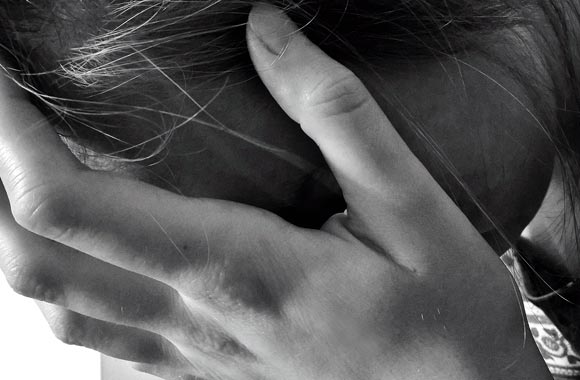
Bipolar Disorder
Bipolar disease is an affective disorder characterized by a prominent and persistent disturbance of mood. This form of illness includes both mania and depression. These are the different manifestations of the same disorder. At different times throughout life the mood swings between two extreme poles of cheerfulness which are called mania and sadness the depression in these patients. This is therefore known as bipolar disorder. This is usually an episodic behavior but may be chronic. Usually, an attack of maniacal excitement alternates with an attack of depression with a lucid interval between the two. For ease of understanding, the two forms are explained separately.
Mania
This state is less common than depression. It is the stage of excitement.
Signs and symptoms of mania: The patient here shows being excited, restless, and very much talkative. This excitement is accompanied by euphoria mostly, and this euphoria is not compatible with the circumstances of the patient. In severe cases, he may be violent and dangerous.
Delirious Mania: This is the most severe degree of mania. In this condition, there occurs clouding of the consciousness with disorientation and impulsiveness. Auditory and visual hallucinations may be present and are often associated with delusions of grandeur which are then followed by a delusion of persecution and the patient may commit some violent and bad act under the influence of this delusion of persecution.
Depression
This is a more common form of the bipolar disease than mania. The feeling of depression and loss of interest in normal activities are the main features. They are also not warranted by the patient’s circumstances.
Signs and symptoms of depression: Refusal to take food, lack of personal attention and concentration, and suicidal tendencies may be present. Hallucinations and delusions are common here and the patient of this disease constantly feels the presence of imaginary evil or danger. Homicidal acts are also very common, therefore.
This act may be performed either in a state of confusion or with complete consciousness. In the case of complete consciousness, it takes the form of an irresistible pulse, for example, a mother throwing her child out of the window. These homicidal behaviors particularly towards emotionally significant persons such as family members may be observed.
Shop Lifting: It is another characteristic of the depressive state. The culprit is mostly a respected middle-aged woman with a full purse who shops lefts in a confusional state, as a cry for help and as an indication of her depressed state of mind.
Etiology of Bipolar Disease
This disease is thought to be due to abnormal structures and functions of the brain. There is an increase in the volume of the lateral ventricle and globus pallidus along with increased hyperintensities of the white matter occur.
Treatment*
The treatment consists of the use of medication as well as psychiatric help.
Mood stabilizers such as lithium salts are considered good in the treatment as well as they can be used prophylactically in manic-depressive patients. But this drug possesses many adverse effects. Other drugs approved for the treatment of this disorder include carbamazepine, valproic acid, and lamotrigine. Antipsychotics and benzodiazepines can also use as an adjunctive treatments for the acute stabilization of patients with mania.
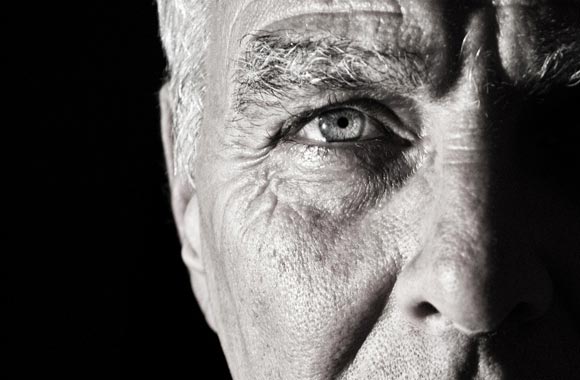
Personality Disorders
Personality disorders are psychiatric disorders in which a person’s thoughts, emotions, and overall behavior show marked differences from the culture he belongs to. These things lead to many serious problems in his personal, social and cultural life. They mostly arise during early adulthood or during adolescence. They are long-standing disorders that make the person’s personality inflexible and unstable. These lead to such personal problems that such a patient further undergoes stress and depression.
Forms
These disorders appear in a variety of forms. Some of these, are as follows:
Avoidant Personality Disorders: In this type of disorder a person remains shy, reluctant, and sensitive. He cannot initiate things himself and is confident less. He thinks about his own shortcomings all the time.
Paranoid Personality Disorder: In this disorder, a person is hypersensitive and of suspicious nature. He feels fear all the time.
Obsessive-Compulsive Personality Disorder: It is a disorder in which a person makes his own rules and wants to be perfect in anyhow. He makes his rigid routine and does not want to be disturbed at all.
Antisocial Personality Disorder: In this disorder, a person violates the law and manipulates others’ rights. He is reckless and does not care for his safety as well as others’ safety. He is very irresponsible towards his work and his family.
Borderline Personality Disorder: Here a person shows unstable emotions and fears of being abandoned. He shows frequent anger and remains lonely.
Schizoid Personality Disorder: In this disorder, a person does not care about others feeling and remains indifferent to them. He mostly remains alone, withdraws himself from society, and behaves oddly and strangely.
Histrionic Personality Disorder: Here a person shows a burst of emotions. He tries to attract others with his dramatic emotions. He behaves in a seductive way and can be influenced by anyone easily. He shows a lack of apathy.
Dependent Personality Disorder: In this disorder, a person depends wholly on other people in order to fulfill his emotional as well as physical needs.
Schizotypal Personality Disorder: It is a mental condition where a person has unstable thinking, a disturbing pattern of behavior as well as appearance. These things lead to problems in his relations.
Narcissistic Personality Disorder: Here a person always wants to be admired and get compliments all the time from people.
Signs and symptoms
These vary according to the type of disorder. But overall in every disorder, strange behaviors and acts of the person are found. These all somewhat show antisocial activities and show no love and respect towards others.
Diagnosis
As there are no such physical and pathological findings seen apparently so they are best to diagnose by evaluation of the psychological behavior along with history and other examinations.
Treatment*
Treatment involves the use of certain medications. But it is best treated by psychological therapy and by talk therapy. Treatment should aim to make them social, human, and act towards their life so that improvements in their relationships also occur and these people may become responsible.
